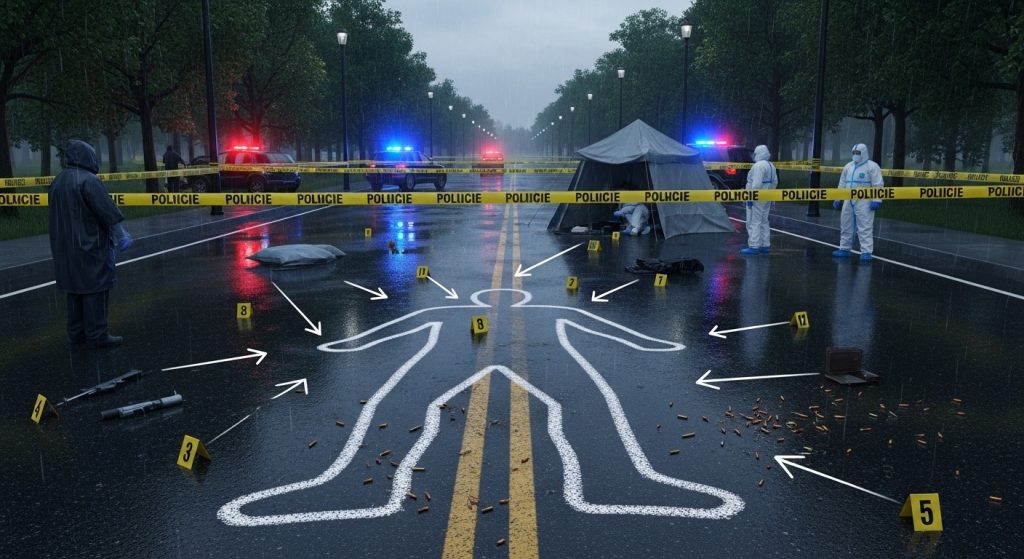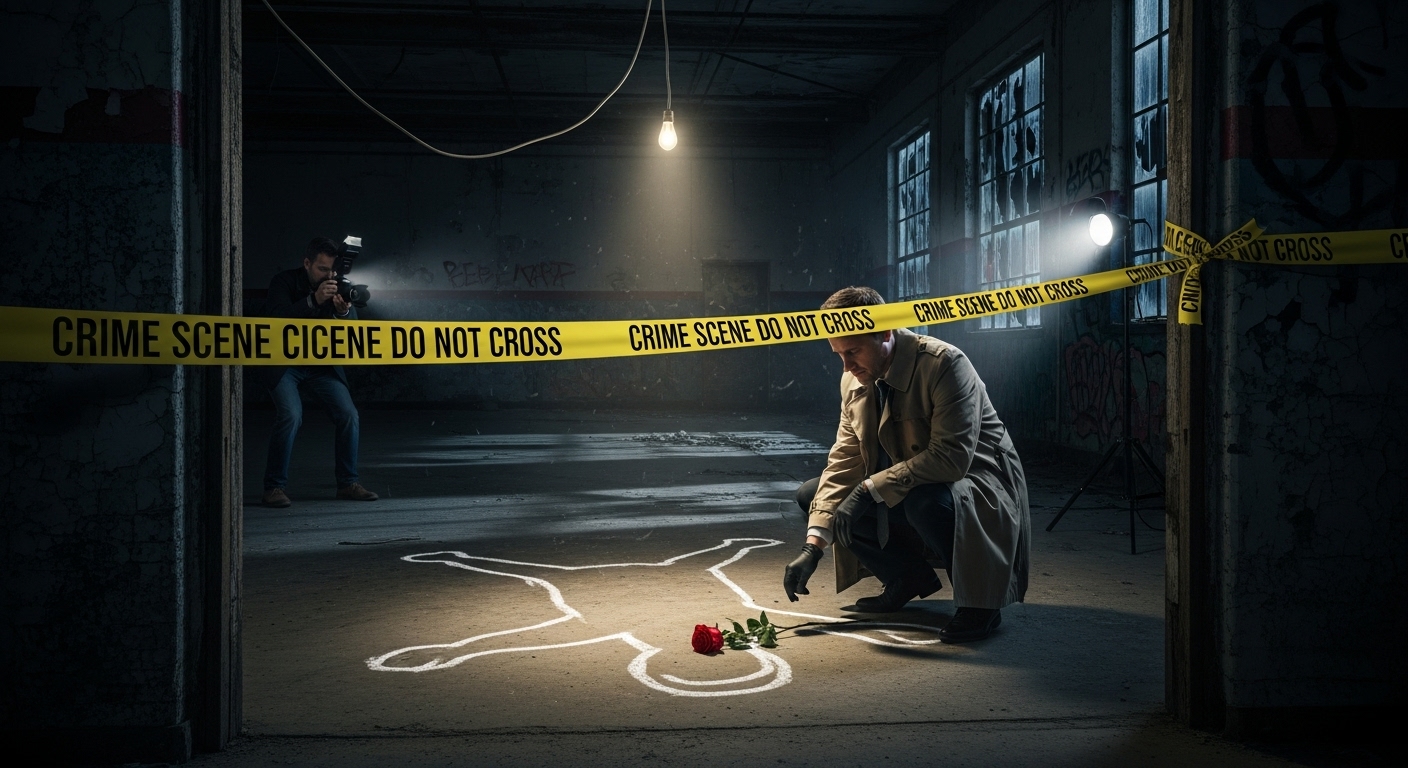When you see a crime scene on TV, there are always police officers, detectives, and people in lab coats. But have you ever noticed that one person who shows up to look at a dead body? They are often called the “Medical Examiner,” or M.E. for short.
Their job is one of the most important, and most misunderstood, in any investigation. So, what does a Medical Examiner actually do when they arrive at a crime scene?
In simple terms, a Medical Examiner is a specially trained doctor who figures out how and why someone died. They are a detective for the dead. Their work at the crime scene is the first, and most critical, step in finding the truth.
This article will walk you through their fascinating and crucial job, step-by-step.
Who is the Medical Examiner? (It’s Not the Coroner!)
First, let’s clear up a common mix-up. Many people use “Medical Examiner” and “Coroner” to mean the same thing. But there’s a big difference!
- A Medical Examiner is a medical doctor, almost always a specially trained doctor called a forensic pathologist. They have gone to medical school and have years of extra training in how to figure out the cause of death. They are appointed to their job based on their medical expertise.
- A Coroner is an elected official. They might not be a doctor at all. In some places, a coroner can be a sheriff, a funeral home director, or even a farmer. Their job is similar, but they often rely on Medical Examiners to do the medical parts.
For this article, we’re talking about the Medical Examiner—the expert doctor.
The Medical Examiner’s Step-by-Step Role at the Crime Scene
When a death is sudden, violent, suspicious, or unexplained, the police call the Medical Examiner. From the moment they arrive, their work is a careful, scientific process.
Step 1: The Briefing and Scene Assessment
The M.E. doesn’t just rush in. First, they talk to the lead detectives and crime scene investigators. They ask questions like:
- Who found the body?
- What time was it found?
- Has anything been moved?
- Are there any obvious dangers?
They look at the whole scene from a distance to understand the “big picture.” This helps them form early ideas about what might have happened.
Step 2: Documenting the Body’s Position and Surroundings
This is where the real detective work begins. The M.E. carefully observes the body exactly as it was found, without touching it yet. They note:
- The body’s position: Is the person on their back, stomach, or side? Are their arms and legs in a strange position?
- Clothing: Is the clothing messy, torn, or missing? This can suggest a struggle.
- Rigor Mortis: This is when the body becomes stiff after death. How stiff the body is helps the M.E. estimate the time of death.
- Livor Mortis: This is when blood settles to the lowest parts of the body, causing purple-red discoloration of the skin. If the body is on its back, the back will be pale, and the backside will be discolored. This also helps figure out the time of death and if the body was moved after death.
- The immediate area: The M.E. looks for clues around the body—a weapon, blood spatter, pills, a suicide note, or broken furniture.
Why this matters: A body found in a locked room with a note and pills is very different from a body found in a park with scattered belongings. The scene tells the first part of the story.
Step 3: The External Examination
Now, the M.E. puts on gloves and carefully examines the body right there at the scene. They are looking for evidence on the outside of the body.
- Trauma: They look for any injuries like cuts, bruises, scrapes, or bullet holes. They note the size, shape, and location of each one.
- Defensive Wounds: Cuts on the hands or arms can show that the person was trying to fight off an attacker.
- Other Evidence: They look for hairs, fibers, or dirt on the clothing or skin that might not belong to the victim. They might find tiny pieces of evidence under the fingernails if the person scratched their attacker.
During this exam, the M.E. is already asking medical questions: Does this wound look like it was from a knife or a fall? Does the pattern of this bruise match the shape of an object nearby?
Step 4: Evidence Collection on the Body
The M.E. works with crime scene technicians to collect evidence directly from the body before it is moved.
- They might place paper bags over the victim’s hands to protect any evidence under the fingernails.
- They might use swabs to collect possible DNA from bite marks or other areas.
- If there is a bullet wound, they will look for and collect the bullet if it is still in the body (this usually happens later during the autopsy).
This step is crucial to make sure no evidence is lost when the body is transported to the morgue.
Step 5: The Body’s Journey to the Morgue
Once the scene is fully documented and the initial evidence is collected, the M.E. supervises the careful moving of the body. It is placed in a clean, new body bag to prevent contamination and taken to the medical examiner’s office for an autopsy.
The M.E.’s job at the crime scene is now complete, but their investigation is far from over.
The Next Step: The Autopsy
The word “autopsy” means “to see for oneself.” It is a detailed medical examination of the body performed in a sterile lab called a morgue. This is where the M.E. finds the medical facts to support what they saw at the scene.
During an autopsy, the Medical Examiner:
- Does a full external examination, more detailed than the one at the scene.
- Examines the internal organs to look for damage, disease, or other clues.
- Takes small samples of tissues and fluids (like blood and urine) to be tested in a lab.
The lab tests can find things like:
- Poisons or drugs in the system.
- Genetic diseases that may have caused a sudden death.
- The exact type of weapon used, based on the internal damage.
Putting It All Together: The Final Report

After the autopsy and all the lab tests are done, the Medical Examiner writes an official report. This report answers the key questions:
- Cause of Death: This is the specific injury or disease that directly led to death. Examples: “Gunshot wound to the chest,” “Massive blood loss from a stab wound,” or “Strangulation.”
- Manner of Death: This is the type of death. There are only five official categories:
- Homicide: Death caused by another person.
- Suicide: Death caused by oneself.
- Accidental: Death from an unintentional injury.
- Natural: Death from a disease.
- Undetermined: There is not enough evidence to pick one of the other four.
The scene observations, the external exam, and the autopsy all work together to determine the cause and manner of death. A gunshot wound (cause) could be a homicide, suicide, or accident (manner). The Medical Examiner uses all the evidence to decide which one it is.
Frequently Asked Questions (FAQs
Q: Does the Medical Examiner get scared or sick at a crime scene?
A: They are trained professionals, but they are still human. They can be affected by especially sad cases, like the death of a child. However, their training and focus on the scientific work help them stay calm and objective.
Q: How long does it take for a Medical Examiner to determine the cause of death?
A: It depends. Sometimes, it’s obvious at the scene, like in a car accident. But for a full, official report with toxicology tests, it can take several weeks or even months. Good science takes time.
Q: Do Medical Examiners only work on murder cases?
A: No! They investigate any sudden or suspicious death. This includes drug overdoses, car accidents, falls, sudden infant deaths (SIDS), and people who die alone with no known medical history.
Q: Can a family refuse an autopsy?
A: In most cases of suspicious death, the autopsy is required by law. The Medical Examiner has the legal authority to perform one to protect public safety and find the truth. For natural deaths in a hospital, families can often refuse.
Q: Is the job like what you see on TV shows like CSI?
A: Not really. TV shows make it look fast and glamorous. In real life, it’s a slow, careful, and methodical process. The M.E. spends more time in the lab and writing reports than chasing suspects!
By the Numbers: The Facts Behind the Wor
Statistics help us understand the scale and importance of a Medical Examiner’s work.
- According to the Centers for Disease Control and Prevention (CDC), there were over 2.8 million deaths in the U.S. in a recent year.
- It’s estimated that 10-15% of all deaths require some kind of medical examiner or coroner investigation. That’s roughly 280,000 to 420,000 cases per year.
- A 2016 report by the National Academy of Sciences found that many Medical Examiner offices are underfunded and understaffed, handling far more cases than the recommended limit of 250 autopsies per pathologist per year. This shows how vital their work is to the justice system.
- The U.S. Bureau of Labor Statistics states that the demand for forensic science technicians, a field that includes medical examiners, is projected to grow 11% from 2021 to 2031, much faster than the average for all occupations.
Conclusion: A Voice for the Victim
A Medical Examiner at a crime scene is not just a doctor for the dead. They are the first and most important advocate for the victim. They collect the silent evidence that the body holds. Their careful, expert work at the scene lays the foundation for the entire investigation.
By figuring out the how and why of a death, they provide answers to grieving families, help police find the right person to arrest, and ensure that our justice system is built on solid, scientific facts. They are the crucial link between the crime scene and the courtroom, giving a voice to those who can no longer speak for themselves.




0 Comments